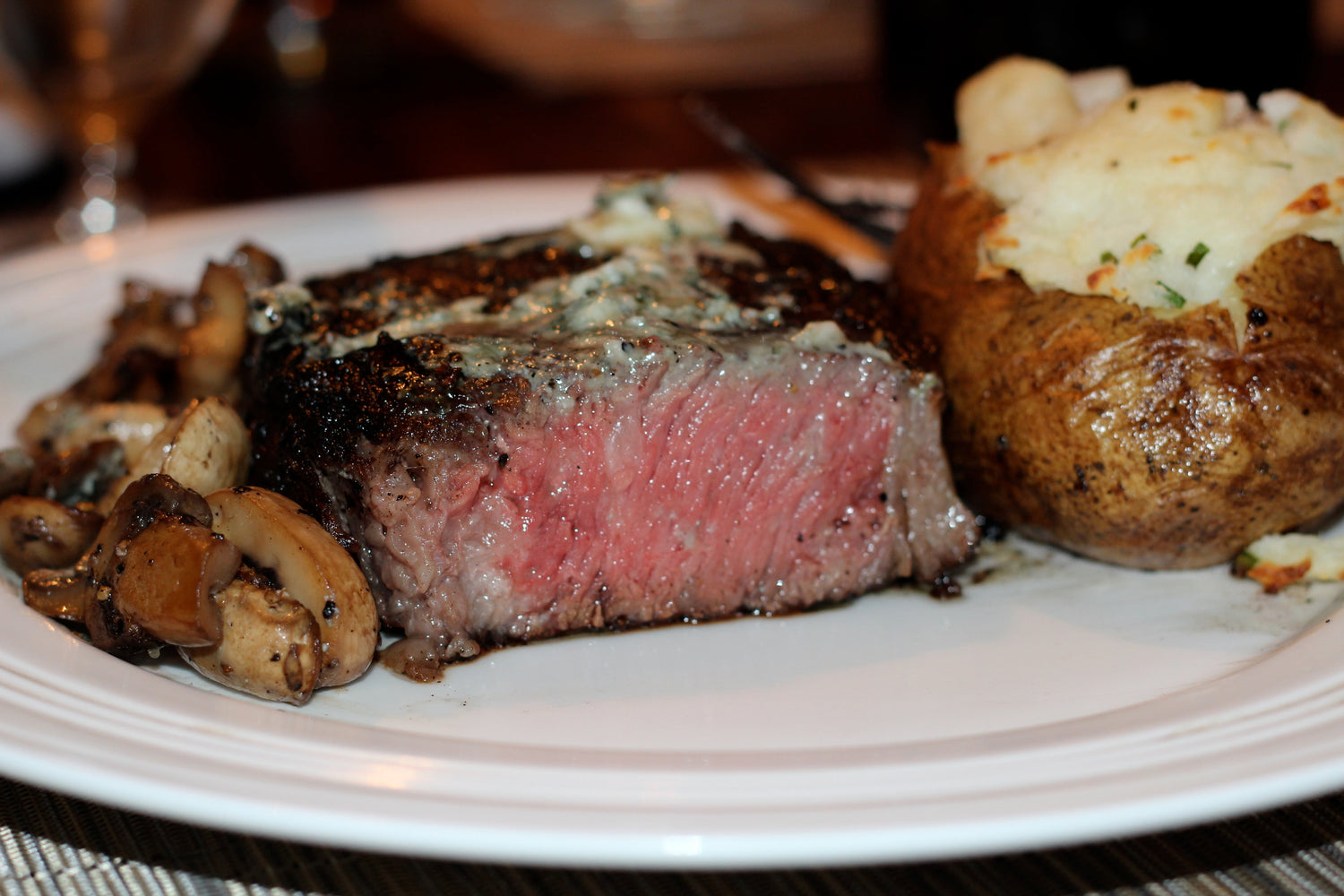Congratulations! Your patience has paid off, and your Dry Aged ribeye, striploin, or sirloin is ready. Now it’s time to trim the “bark," cut into steaks, and get ready to enjoy, share or preserve to savor over time.
Steak lovers, beware
Dry Aged steak cooks faster than “wet-aged” steak. Because of the lower water content, you can't indicate doneness through weeping or shriveling. The time the meat spends in the UMAi Dry bag provides tenderness that you don’t want to unintentionally turn to shoe leather!
Cooking Dry Aged steaks
Dry Aged steaks tend to cook faster than wet-aged steaks because there is less water in them to “bring to a boil.” The steak will cook in much less time, so you'll want to watch carefully.
We Recommend using a quick-read thermometer like the Escali Waterproof Digital Thermometer. And pulling the steaks off the heat before they reach the desired temperature. They'll finish cooking after you pull them off the grill.
The ultimate way to cook a steak is to sous vide ("under vacuum")
Many chefs will quickly sear the steaks before vacuum-packing them with a pat of butter and seasoning. When you sous vide this way, the flavors develop and penetrate the meat delectably. Sous vide cooking is your best guarantee of a perfect steak—exact temperature, ideal texture, complete nutritional value, and maximum flavor.
Freezing Dry Aged steaks
Dry Aged steaks freeze well with minimal impact on taste or texture. Because of the reduced moisture content, Dry Aged steaks are less susceptible to freeze damage than wet-aged steaks. Simply vacuum-seal your Dry Aged steaks into vacuum/sous vide bags, and place them in your freezer.
For best results, thaw the steaks slowly in the refrigerator, and then bring them to room temperature before grilling or cooking sous vide. You might want to “hot tub” the steaks in their bag in lukewarm water for an hour or so before cooking so you know they are just right when you toss them on the grill.




